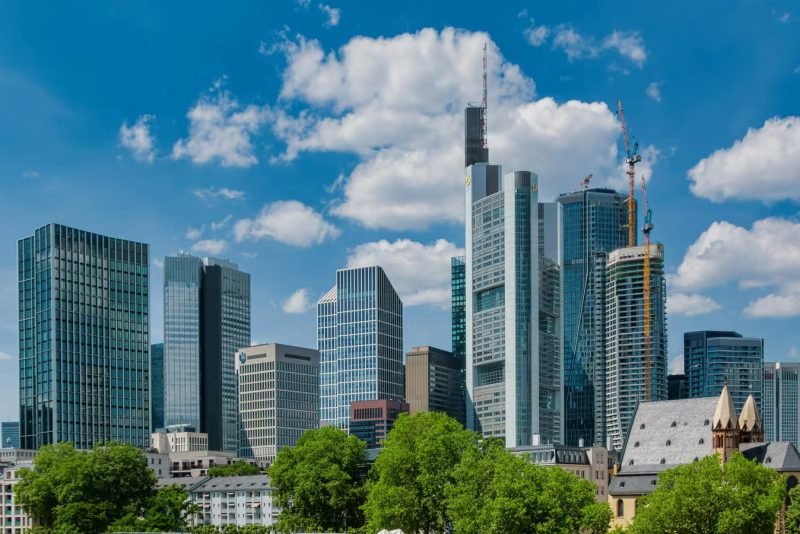Hit hard by the pandemic, commercial real estate seems to be back on track. What is driving the growth of this segment?
Having overcome the blip of the past two years, the commercial real estate (CRE) segment is back in the reckoning. All CRE segments, including office, retail, industrial, logistics and hospitality, are doing well now and attracting increased investor interest. Taking a host of factors into account and based on data collated by various research agencies, the outlook for the segment, too, seems bright by all counts.
With long drawn-out closure of offices and the pandemic making working from home (WFH) the new way of working, new office space requirement was severely impacted. According to a JLL India report, new supply of office space across seven major cities in India declined 30% to 36.34 mn sq ft in 2020 from 51.62 mn sq ft in the previous year. However, the recovery began last year itself and the absorption of Grade-A office space is estimated to spurt in 2022, with Delhi-NCR accounting for the majority of the demand in this segment. In fact, office gross absorption across the top six cities has already seen almost a 3-fold rise to 14.7 million sq feet during Q2 2022 as compared to the same period last year, according to Colliers.
An additional factor that has been driving the demand for more office space is the requirement of maintaining a distance of 5-6 feet between workstations in offices, in keeping with the social distancing norms. Besides, the overall normalcy and the withdrawal of most pandemic-related curbs have brought the footfalls back to pre-Covid levels in markets, malls and restaurants, and that has led to a significant boost in the demand for these segments. Here again, with new norms in place, developers are going for retail spaces with touch-free and voice-controlled features to ensure the maximum possible safety.
The recent growth in the co-working sector and an increased demand for data centres are yet another reason for the commercial sector getting a big push. A phenomenal rise in digital transactions post-pandemic has necessitated the setting up of data centres across the country with regular rise in e-commerce activities, online education, data consumption and payment gateway. With this, the demand for data centres is set to rise by 25-35 per cent in the next two years, according to reports and that is obviously a big plus for the commercial segment.
Attributing the growth in the commercial segment largely to Government initiatives, Akshay Taneja, MD, TDI Infratech Ltd, said, “The Make in India campaign coupled with reforms like RERA and GST have come as a boon for the industry. Despite their initial reluctance, developers and buyers are moving to the commercial real estate sector due to the transparency and competence of the sector. The overall economic growth is also driving demand for commercial property.”
According to the latest Outlook 2022 report by Knight Frank India, the commercial real estate sectors would experience stable and sustainable growth in 2022. Also, a joint report by Colliers and Qdesq says that the absorption of office space will cross 60 million square feet in metro and non-metro cities by 2023. The tepid demand for the last two years has converted into an agile and flexible work model and this is what is driving the commercial real estate demand. Large businesses dealing in IT-Business Process Management, e-commerce and consulting would be the leading occupiers.
Since commercial spaces offer much higher rental yields, investors are obviously drawn more towards this segment. Attractive appreciation potential, recurrent rental income and tangible nature of the sector have resulted in renewed interest from them. Besides, with the investment process in the commercial real estate becoming more stable, transparent and efficient with the advent of REITs, the funding in the segment has grown manifold.
The investment by millennial NRI investors is of particular significance in this regard. According to a MYRE Capital survey, 53% of the NRI investors choose commercial real estate as their favourite investment vehicle over ETFs (21%) and mutual funds (19%), with the average ticket size for an NRI being higher, at Rs 38 lakh, as compared to a resident CRE investor.
LC Mittal, Director, Motia Developers is of the view that the lockdown has offered new innovative concepts to the commercial real estate sector and increased the demand for rental properties with great amenities. He said, “Commercial real estate is expected to flourish in the next few months at a faster pace. Both rental and capital value for commercial property will rise in the market. The corporate world has begun to show active participation in expanding its ventures; and that’s a healthy portent for the commercial realty sector.”
“The commercial sector,” said Kunal Bhalla, Co-Founder and CEO, CRC Group, “has seen a massive turnaround as a result of the multiple business-friendly initiatives announced by the government.” “Moreover, commercial assets, such as offices, shops, warehouses, and other commercial properties, are considered the most secure investments because they generate recurring rental revenue. This view has only been strengthened post-pandemic and it is going to remain the driving factor for investment in times to come,” he added.
Source : FE




